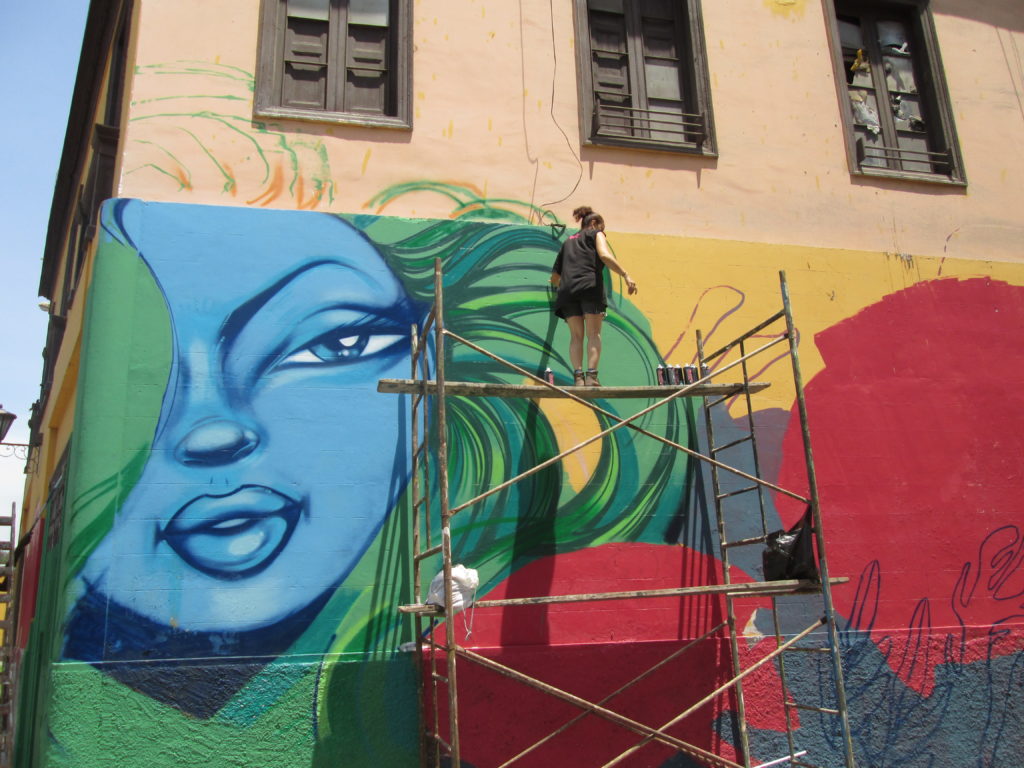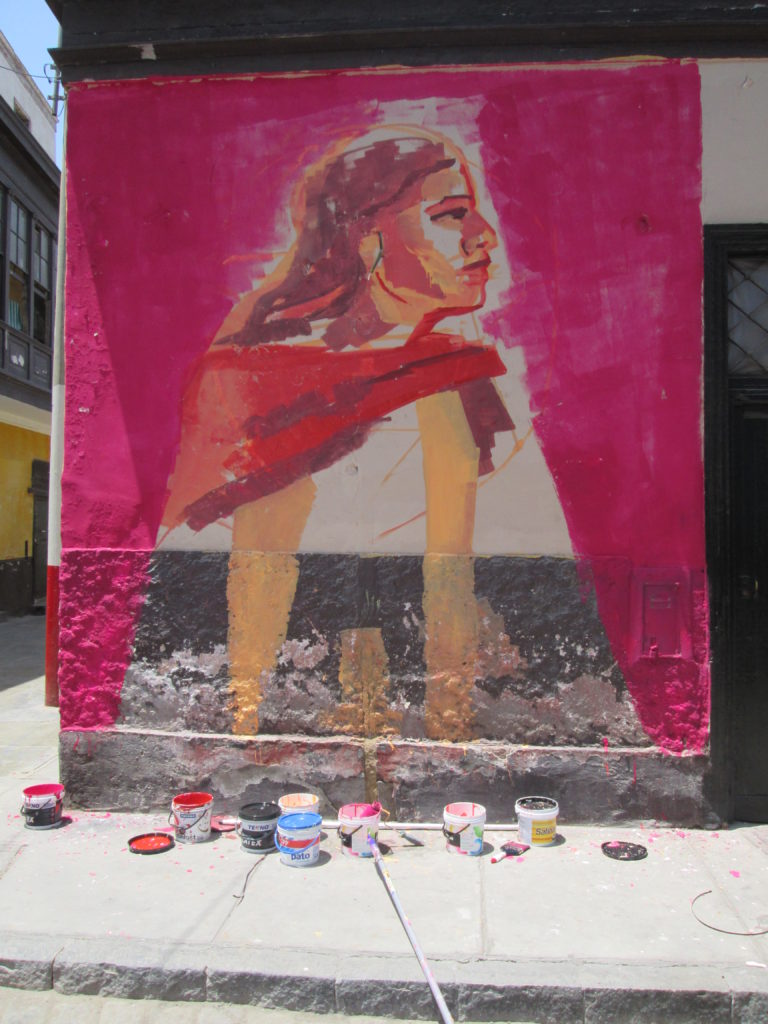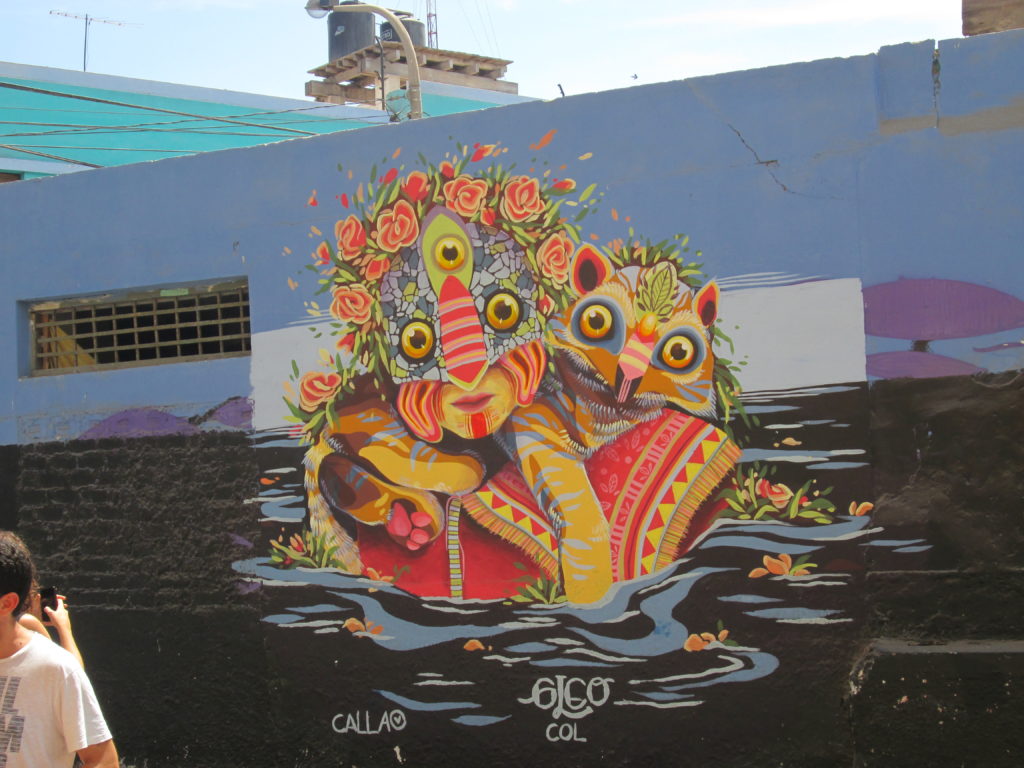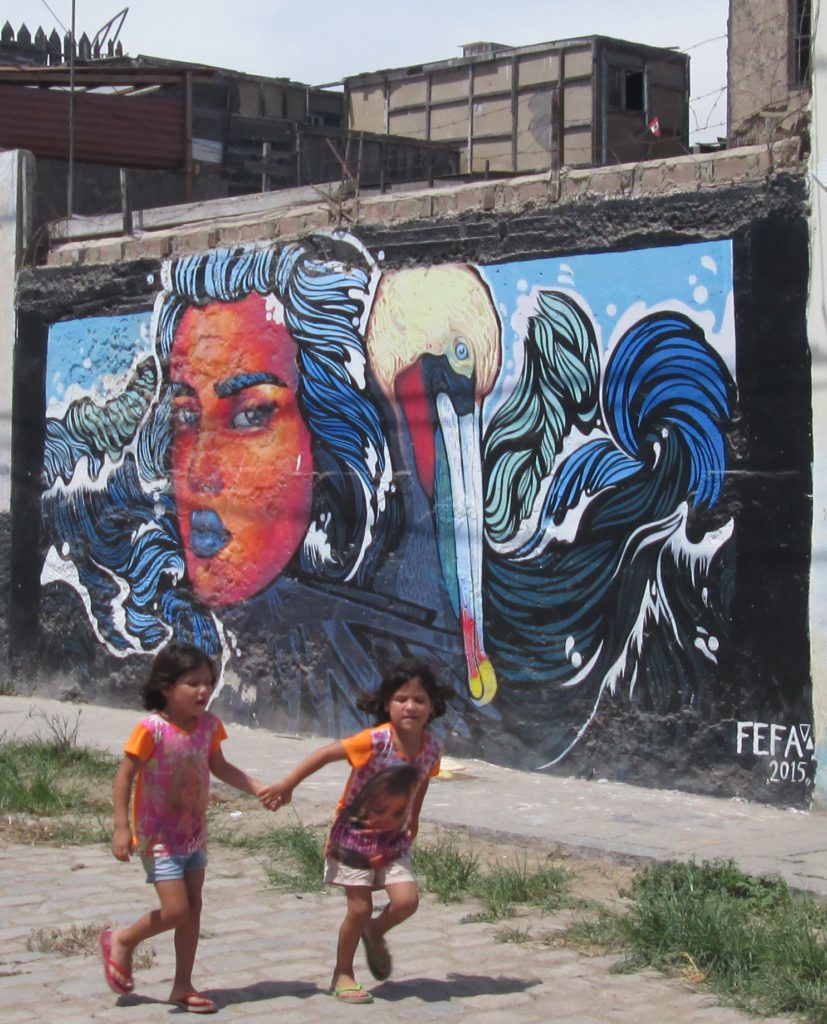Fish murals fighting Lima gang warfare

The Plaza del Matrix is a tidy little paved square with benches in front of the cathedral church, in wedding cake pink and white. The Matrix church was shattered by a tidal wave in 1746, and the roof collapsed in the 1966 earthquake, killing 14. The square is flanked by beautiful colonial buildings with freshly painted yellow plaster walls, colonnades and upper balconies. Behind is a cluster of concrete cylinders 11 stories high, and beyond that, stacked containers and loading cranes. On the other side of the Plaza is a mural, as tall as the cathedral and twice as wide, showing a brown man and a pink man, with arms round each other’s shoulders. They could be holding each other up, or pulling each other down. Welcome to Callao, Lima’s historic port.


One block behind the cathedral square, the back streets of Callao’s Centro Historico are cobbled, the buildings are magnificent and sagging. Through upper windows you can see the sky. Sometimes through the walls you can see the sky. Historic buildings have become crowded tenements, unmaintained, some without water or electricity, but now the walls of these back alleys are glowing with colour. Vivid murals of flowers, fishermen and saints, octopuses and Incas are spreading across the walls as artists from Peru, Colombia and Brazil work from stepladders and scaffolding to express their visions.
Eighteen artists are currently working to regenerate the area through art. A tough ask. Callao is the backdrop for a war between armed gangs and is also under a state of emergency imposed by the police in early December. Thirty-eight people have been shot dead this year. In just 70 days. But the gangs, fighting for supremacy in the extortion, drugs and construction businesses, are said to have been around for 20 years.

The privately financed Proyecto Fugaz is creating a cosmopolitan arts centre and boutique shopping centre in the old port. The Casa Ronald, an historic building unused for decades, has been revitalised. On either side of its magnificent marble columned arcade, decorated with busts of Goethe, Wagner, Mendelssohn and Menochthon, the shops are being tenanted by artists and designers. From this focal point and through the surrounding street art, the Project hopes to regenerate the area.
As our guide takes us round the block, and artists show us their sketches and pose for photographs, a security guard follows us closely. We are expensively dressed, more colonial than indigenous, tall and blond rather than short and dark. He is there to protect us, but he is not watching us. He is looking beyond us, down the next street, unobtrusive and very alert. “What is the security like here?“ I ask him. “As you see, it is very peaceful. It usually is at this time. But later in the day…not so good.”
People walk past us shouting to their neighbours on the second floor of the tenements. One of our group jokes that it is the Callao telephone system – because they don’t carry mobiles. But the locals also want to make a statement. These are their streets.

Four teenagers playing football also want to claim the streets as their own. They kick the ball around at the end of the road, alternately watching us or looking round the corner to the next block. Three of them walk past and through us, neither hostile nor friendly. Defining territory. A car drives slowly past on the cobbles and they are pacing beside it, tapping on the bonnet, leaning in through the window. “You can’t come in here. No cars. Where are your papers?” I turn to our bodyguard and he raises his eyebrows and nods. I see that what I though was a simple shirt with the words Seguridad Ciudana – Citizen Safety is a bullet-proof vest.
Three old men sharing a beer shout out to the visitors “welcome to our barrio!” Children run along the cobbles, and on the next corner a family sit on stools, not watching the camera-wielding visitors but looking at the streets beyond.

